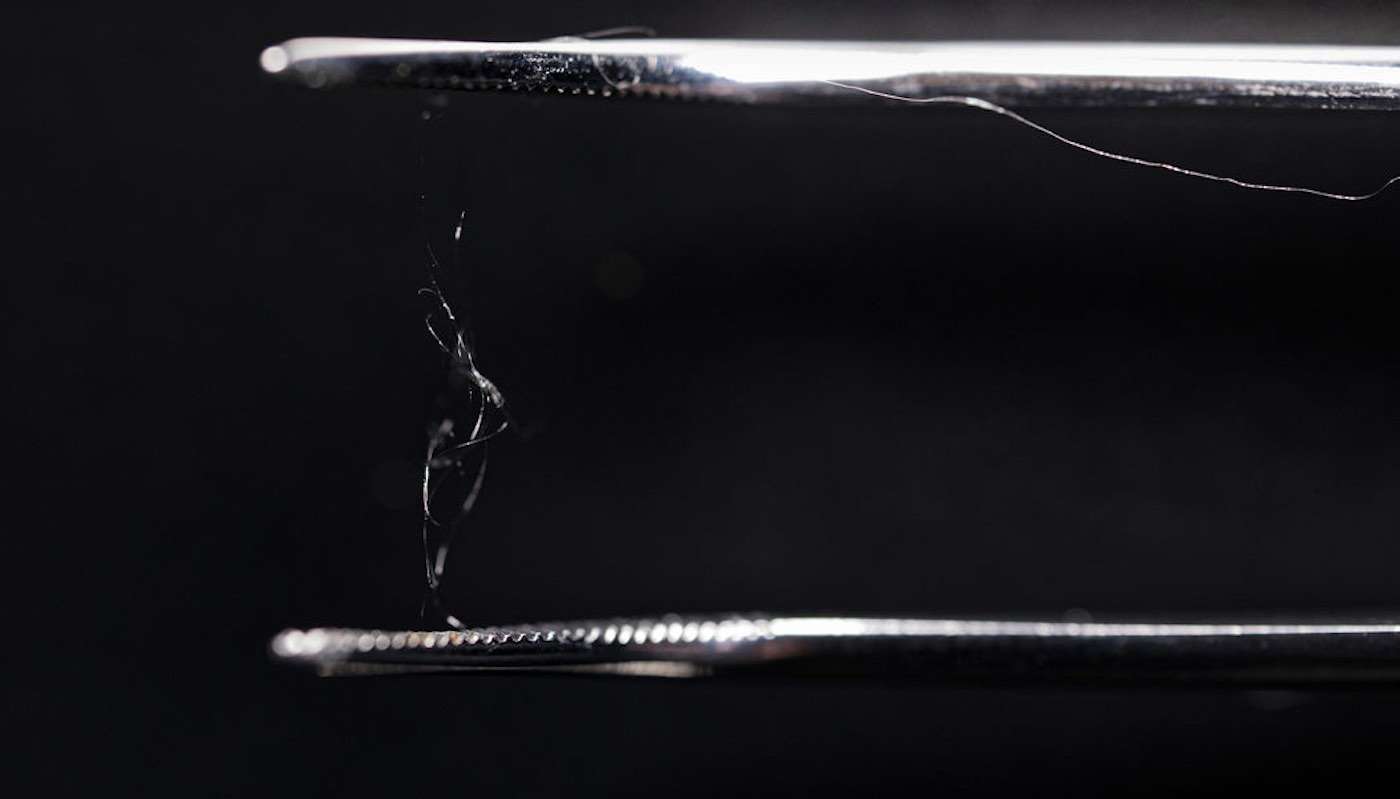Indoor Solar Cells That Can Generate Electricity From Home Lighting Could Power All Our Everyday Electronics
These inexpensive solar cells could power all of our household electronics without the need for disposable batteries.

Researchers have developed a unique new material out of wood and spider silk—and since it outperforms most of today's synthetic and natural materials by providing high strength, stiffness, and increased toughness, scientists say it could one day replace plastic.
Achieving strength and extensibility at the same time has so far been a great challenge in material engineering: increasing strength has meant losing extensibility and vice versa.
Now Aalto University and VTT Technical Research Centre of Finland researchers have succeeded in overcoming this challenge by seeking inspiration from nature.
The researchers created a truly new bio-based material by gluing together wood cellulose fibers and the silk protein found in spider web threads. The result is a very firm and resilient material which could be used in the future as a possible replacement for plastic, as part of bio-based composites and in medical applications, surgical fibers, textile industries, and packaging.
According to Aalto University Professor Markus Linder, nature offers great ingredients for developing new materials, such as firm and easily available cellulose and tough and flexible silk used in this research. The advantage with both of these materials is that, unlike plastic, they are biodegradable and do not damage nature the same way micro-plastic do.
"We used birch tree pulp, broke it down to cellulose nanofibrils, and aligned them into a stiff scaffold. At the same time, we infiltrated the cellulosic network with a soft and energy dissipating spider silk adhesive matrix," says Research Scientist Pezhman Mohammadi from VTT.
Silk is a natural protein which is excreted by animals like silkworms and also found in spider web threads. The spider web silk used by Aalto University researchers, however, is not actually taken from spider webs; it is instead produced by the researchers using bacteria with synthetic DNA.
"Because we know the structure of the DNA, we can copy it and use this to manufacture silk protein molecules which are chemically similar to those found in spider web threads. The DNA has all this information contained in it," explained lead researcher and university professor Markus Linder.
"Our work illustrates the new and versatile possibilities of protein engineering," added Pezhman. "In the future, we could manufacture similar composites with slightly different building blocks and achieve a different set of characteristics for other applications. Currently we are working on making new composite materials as implants, impact resistance objects and other products."
The research project is part of the work of the the Centre of Excellence in Molecular Engineering of Biosynthetic Hybrid Materials. The research was published in Science Advances earlier this week.
Reprinted from Aalto University
Build Up Some Positivity By Sharing The Good News With Your Friends On Social Media…
Be the first to comment